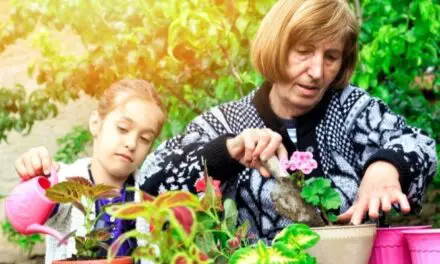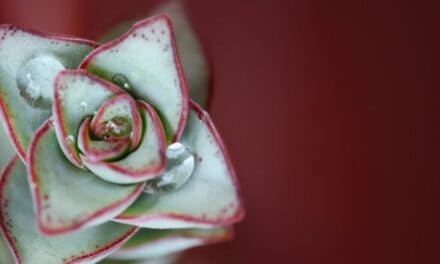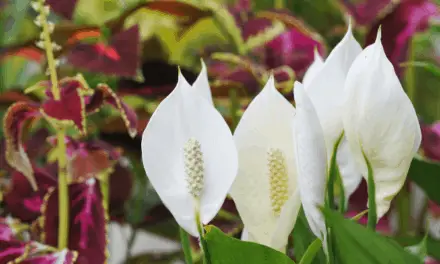Cotton blooms and flowers are extremely beautiful and can make a wonderful addition to any garden or room in your home.
This self-pollinating plant develops white blooms that open in the morning.
And within about 24 hours, the blooms change color to a pinkish hue indicating pollination has taken place.
But before you begin planting keep in mind that in some states, where cotton is grown commercially, it is illegal to grow cotton in your garden.
So definitely check that out before you proceed.
Cotton is a lovely plant that looks great in your garden and produces its famous soft cotton fiber that you can spin Into yarn and knit with.
Cotton has always been an exciting plant that gardeners love to grow.
It doesn’t matter whether you’re young or old, there is a lot to learn about cotton and it’s a lot of fun to grow.
And because it is such a beautiful addition to your home or garden, many people want to know how best it can be grown.
Cotton is a sensitive plant and there are several things you need to keep in mind if you want to grow it successfully.
From basic information on the most suitable climate to other essential tips, you will be discovering lots about how you can easily grow cotton at home, indoors, and outdoors.
Table of Contents
What Type Of Climate Is Good For Growing Cotton?

Cotton needs a long frost-free period of 5 or 6 months and a lot of heat and sunshine.
It favors a warm and humid climate with air temperatures in the region of 60 – 100°F.
If the soil temperature is lower than 60°F, cotton can have a small germination rate.
The temperature and conditions under which you choose to grow your cotton is extremely important.
It’s so important that it can’t be overemphasized.
Cotton is quite sensitive to climatic changes. And if it is not cared for under the right climatic conditions, the plant can easily end up in bad health.
The first thing you need to know about cotton is that it thrives in a warm climate.
Whenever temperatures dip, the health of cotton can quickly decline.
Therefore, if you live in a cold region where temperatures dip below 60 degrees F, an outright planting of cotton might not be the best idea.
That is why it’s not planted when the frost period is on.
But once you are clear that the frost season is over and you have a good 5 or 6-month spell of good weather, cotton planting can commence.
Where Is Cotton Naturally Grown?
Cotton comes in a variety of species and can be found growing in many warm climates.
Cotton plants are naturally grown in areas where there is moist soil and a warm climate.
It does not survive in regions where the temperature is very low.
You’ll find it growing in subtropical areas like India, Egypt, Africa, America, and other similar areas worldwide.
Which Soil Is Best Suited For Cotton?
One thing about cotton is that it is definitely not suited to every type of soil.
Grown in the right soil, it flourishes, but if the wrong soil is used, it won’t take long before the plant goes into decline.
Cotton plants do exceptionally well in regions with highly fertile and well-drained sandy loamy soils that have a PH of between 6.0 and 7.5.
Cotton, regardless of its species, has been known to flourish in soils that have an adequate amount of lime which makes it fertile for cotton planting.
Why Is Black Soil Good For Cotton?
While there is a small range of soil types that suit cotton planting, there is one soil in particular where cotton thrives.
Black soil is considered to be the best for growing cotton for a number of reasons.
- Black soil has a clayey feel and texture that cotton prefers.
- The fine texture of black soil helps it to retain water needed for cotton growth.
- Black soil also has the nutrients that cotton requires to grow well. These include magnesium and calcium carbonates.
In fact, black soil is so suitable for growing cotton that it is often referred to as ‘black cotton soil’.
So if you are thinking of planting cotton, black soil should definitely be your first choice.
Related Article: Is Red Soil Good For Plants?
How Can You Tell Black Cotton Soil?
It’s one thing knowing how perfect a fit black soil is for cotton, but it’s another thing being able to identify black soil.
And if you don’t know the defining features of black soil you may end up using the wrong type of soil for your cotton plants.
Here are a few defining features to help you identify black soil:
- It has an obvious black coloration from the titanium oxide. component of the soil.
- It is a fine clay-like soil.
- It expands and becomes sticky when wet and shrinks when dry.
- It can crack badly when it dries out.
Is Black Cotton Soil Cohesive?
Black soils are generally considered as being cohesive.
Whenever you hear of cohesive soils, you should also think of fine soils.
Soils that are non-cohesive are usually coarse or sandy soils.
Black soils are termed cohesive because they have the capability of expanding and contracting.
Even though black soil can be a nightmare for construction work, it is regarded as one of the best fits for planting cotton in most parts of the world.
Cotton species really do thrive in black soil.
How To Grow Cotton Indoors
Cotton is a perennial plant but normally grown as an annual plant because of its inability to resist frost.
Cotton will only do well in a place where there is sufficient sunshine as well as warm conditions and no frost for a period of at least four to six months.
And that explains why many people choose to plant their cotton indoors since that helps to keep the plant away from cold, heavy rains and damaging winds.
Here are the steps you need to take if you want to grow cotton indoors:
Plant 2 to 3 cotton seed inside a 4-inch wide peat pot. And don’t forget to add some compost to boost soil nutrients.
Seeds should be planted at a 0.5-inch depth.
Place the pot in sunlight and keep the surface of the soil moist.
Add a little water as needed so the soil does not dry out too much.
You should start to see sprouts within a week to 10 days.
And once the seedlings have sprouted, you can give them a good watering one time per week.
Pots should be placed where they can receive at least 4 or 5 hours of sunlight.
You should also rotate the pots so that the cotton seeds receive equal sun and grow in unison.
The seeds should be kept at a temperature of 65 – 68F.
Weaker seedlings should be thinned out from every pot, the moment the seeds start germinating.
When the cotton has grown passed the smaller pot, remove the peat pot bottom and put them inside a 12-inch diameter peat pot.
If weather permits, move the cotton plants outside where they can receive full sunlight.
How To Grow Cotton Outdoors In Your Garden
Cotton is a versatile plant and can also be grown outdoors.
Here are a few tips for if you want to grow cotton outdoors:
Eliminate the weeds in the soil by working it to between 3 and 4 inches in depth.
Ensure the soil has nutrients by supplying it with compost.
Plant after the frost season has passed, especially when the temp warms up to about 68F.
It should be planted in sets of twos or threes, in soil with a moist texture.
You shouldn’t water it any more than once per week because it doesn’t take too kindly to being overwatered.
Tips For Successful Cotton Planting
We’ve gone into a fair bit of detail so far about planting and looking after cotton.
In this section we want to go over some final tips, just to ensure that your cotton planting ventures will be a big success.
Don’t plant cotton too deep. Stick to the specifications that have mentioned in this article (about half an inch deep).
Stick to just 2 to 3 seeds per one 4-inch pot.
You need to safeguard cotton from hard weather conditions, such as lashing rain, strong winds, and freezing temperatures.
Cotton is highly sensitive to climatic changes so always keep an eye on the weather if you have it planted outdoors.
Natural fertilizers can also help cotton to grow well.
Conclusion
Cotton growing is a fun and rewarding experience, especially when you get to harvest some of the fluffy white stuff at the end.
As long as you stick to the soil and environmental conditions that cotton likes to grow in, you’ll have no problems at all growing this plant in your home or in your garden.
We hope the tips in this guide will help your first cotton harvest to be a successful one.




